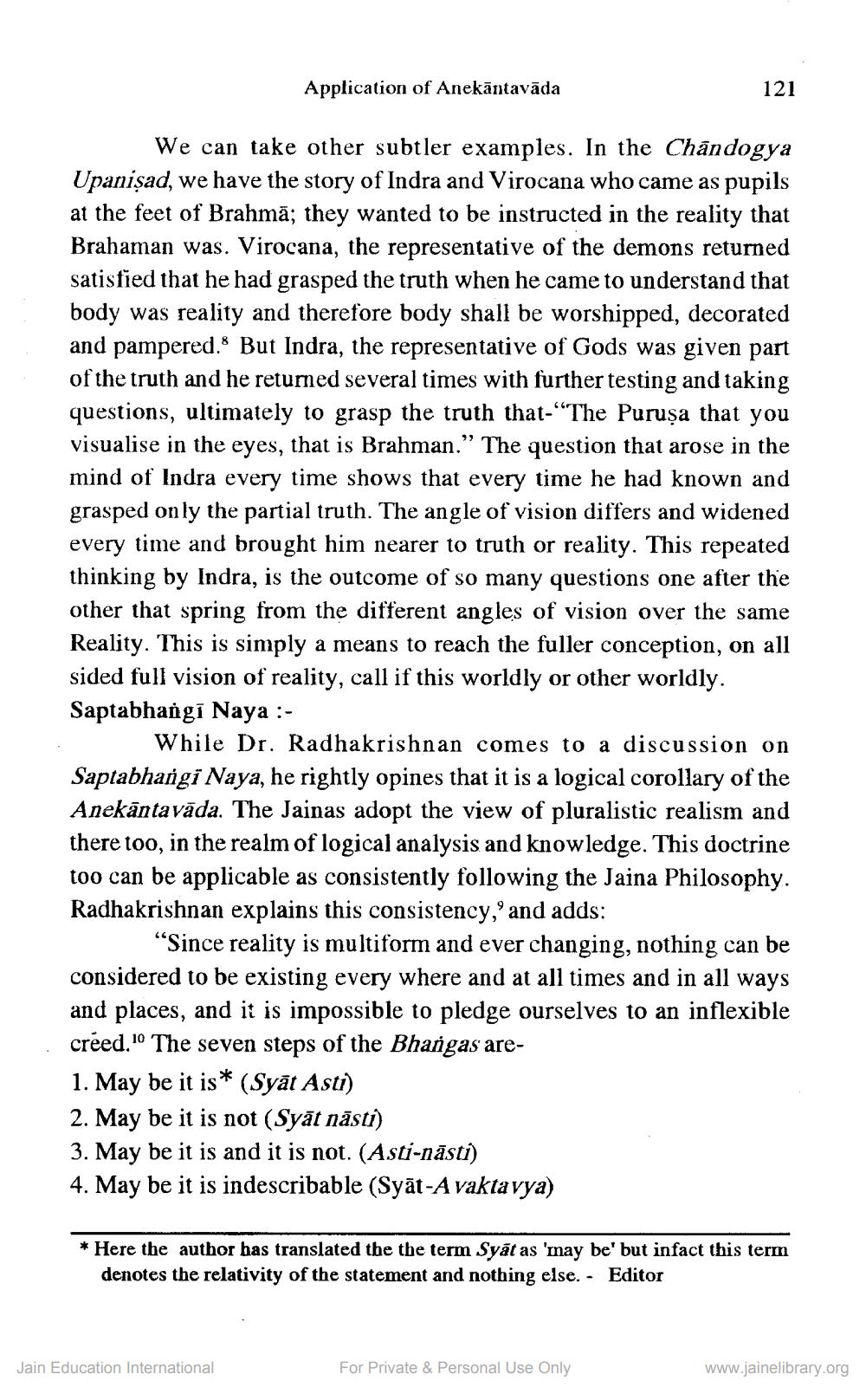________________
Application of Anekāntavāda
We can take other subtler examples. In the Chandogya Upanisad, we have the story of Indra and Virocana who came as pupils at the feet of Brahmā; they wanted to be instructed in the reality that Brahaman was. Virocana, the representative of the demons returned satisfied that he had grasped the truth when he came to understand that body was reality and therefore body shall be worshipped, decorated and pampered. But Indra, the representative of Gods was given part of the truth and he returned several times with further testing and taking questions, ultimately to grasp the truth that-"The Purușa that you visualise in the eyes, that is Brahman." The question that arose in the mind of Indra every time shows that every time he had known and grasped only the partial truth. The angle of vision differs and widened every time and brought him nearer to truth or reality. This repeated thinking by Indra, is the outcome of so many questions one after the other that spring from the different angles of vision over the same Reality. This is simply a means to reach the fuller conception, on all sided full vision of reality, call if this worldly or other worldly. Saptabhangi Naya :
While Dr. Radhakrishnan comes to a discussion on Saptabhangi Naya, he rightly opines that it is a logical corollary of the Anekantavāda. The Jainas adopt the view of pluralistic realism and there too, in the realm of logical analysis and knowledge. This doctrine too can be applicable as consistently following the Jaina Philosophy. Radhakrishnan explains this consistency,' and adds:
"Since reality is multiform and ever changing, nothing can be considered to be existing every where and at all times and in all ways and places, and it is impossible to pledge ourselves to an inflexible creed. 10 The seven steps of the Bhangas are
1. May be it is* (Syat Asti)
2. May be it is not (Syāt nāsti)
3. May be it is and it is not. (Asti-năsti)
4. May be it is indescribable (Syat-A vaktavya)
Jain Education International
121
* Here the author has translated the the term Syat as 'may be' but infact this term denotes the relativity of the statement and nothing else. - Editor
For Private & Personal Use Only
www.jainelibrary.org




